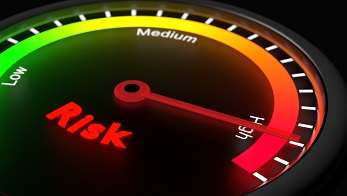Forbes: Why America's Sub-4% Unemployment Rate Means A Recession Is Not Far Off

Article by Jesse Colombo on Forbes
The unemployment rate fell beneath 4% for the past several months, weekly jobless claims are at a 49-year low, and wages are growing at their fastest rate since 2009. So, what's not to like? Obviously, everyone likes good news on the economic front, but these strong job market statistics are a sign that the economic cycle is much closer to the end (including a recession and bear market) rather than the beginning.
As the chart below shows, when the U.S. unemployment rate falls under 4%, recessions follow soon after (recessions are marked by the gray shaded areas on the chart). Historically, U.S. unemployment under 4% is quite rare and typically occurs after a long, powerful economic expansion. By the time the unemployment rate is under 4%, the economic cycle is already mature, the labor market is tight, and inflation is becoming a concern. At this time, the Federal Reserve has been hiking interest rates steadily, which eventually causes the demise of the economic cycle.
According to Nicole Smith, chief economist at the Georgetown University Center on Education and the Workforce:
"The 4 percent number is not exactly a number that economists are necessarily happy with.” “What’s been happening here is, if we look historically at other times when the unemployment rate has fallen below 4 percent, it is times where it was the boom phase just before recession or just after a major war period."
Smith went on to say:
“It’s almost a precursor for a recession or a precursor for another slumping economy.”
The last two times the U.S. unemployment rate fell below 4% was in the late-1960s, which preceded the economic turmoil and bear market of the 1970s, and during the late-1990s dotcom bubble that culminated in a powerful tech stock crash and recession in 2001.
This time around, the 4% U.S. unemployment rate is occurring as a result of what I call the "Everything Bubble" or a bubble that is inflating in a wide range of global assets and sectors as a result of incredibly stimulative central bank policies since the Great Recession. Essentially, the "Everything Bubble" is artificially boosting the U.S. economy and financial markets, which is leading to a jobs boom. Unfortunately, this boom is smoke and mirrors and will end in another crisis when the cycle inevitably turns.
As discussed earlier in this piece, the Federal Reserve is raising interest rates as it typically does as economic cycles mature. Economic recessions, financial crises, and bear markets have occurred after virtually all Fed rate-hike cycles, and there is no reason to believe that the current one will be an exception. What is particularly concerning is the fact that U.S. interest rates have remained at record low levels for a record length of time, which has created unprecedented imbalances and distortions throughout the economy.These distortions will be unwound one way or another, which will result in serious pain. Because of the record debt burden in the U.S. economy, interest rates do not have to rise nearly as high as they did in prior cycles to cause another recession or crisis.
The 10-Year/2-Year U.S. Treasury bond spread is another indicator that tells us that the current U.S. economic expansion is becoming long in the tooth. This spread warned about every U.S. recession in the past half-century, including the Great Recession, so it is wise to pay attention to what it is saying. At the current rate the yield curve is flattening, it could invert within the next several months.
The prospect of recession and bear market in the not-too-distant future is alarming for stock market investors, especially considering that the U.S. stock market is experiencing a dangerous bubble rather than a healthy bull market.
By many measures, the U.S. stock market is more overvalued than it was at important historic market peaks. According to the U.S. stock market capitalization-to-GDP ratio (also known as Warren Buffett’s "favorite indicator"), the market is more overpriced than it was during even the dot-com bubble:
Though the current economic cycle and bull market are not likely to end tomorrow, we are hurtling closer to the day of reckoning when society pays the price for the Fed's market meddling once again. Unfortunately, the next crisis is likely to be even worse than 2008 due to how much more debt we have now. The time to be concerned and start preparing is when unemployment is under 4% - not when it is already at 10%, as it was in 2009.
To read this article in its entirety on Forbes Website, click here